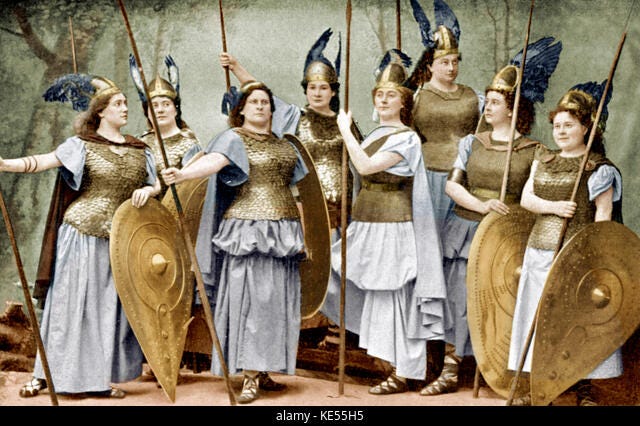The transformation of music in modern history
Review of The Triumph of Music: The Rise of Composers, Musicians and Their Art by Tim Blanning
If not exactly trailblazing, this is a fun, fairly light read that brings a huge amount of trends together. A Cambridge historian, Blanning looks at how a number of aspects of music evolved and changed how music was perceived and performed and what it meant.
First, Blanning looks at the status of those who composed and performed music. Starting off as servants or even slaves, the role of musicians morphed into a romantic ideal of God-like genius, a kind of spiritual lodestar. As Handel and Bach emerged as individuals able to make a living from music – they were among the first to write down their scores; thus, their compositions were no longer ephemeral and local, but for both a cosmopolitan audience and future generations. Beethoven became the quintessential genius, a volatile prototype for today’s pop stars who command near-revolutionary power over their followers.
Second, the venue is which music was performed moved from churches and royal and aristocratic parlors to massive stadiums with pop music until today, when it can be diffused through social media. Local to global.
Third, musical technology evolved from prohibitively expensive (aristocratic crafts) to affordable (the bourgeois revolution through mass manufacturing), while the availability of it came increasingly under control by listeners (cassette tapes, then iMusic).
Fourth, the internal meaning of music morphed from religion and a projection of power (Louis XIV, nationalism, etc.) into a popular political tool, a call to youthful rebellion, and even a place that forms psychosocial identity.
In each chapter, Blanning follows the subject (e.g., technology) over several hundred years, roughly from the Enlightenment to the present day. It is very fun the way he embeds these developments into historical context. If the level of historical knowledge required is late high or early undergraduate, the writing is always accessible and elegant.
For me, the great virtue of the book is how he vividly ties things together over a vast range. You go from Bach and Mozart through Beethoven to Thelonious Monk and The Beatles. I clearly got the sense that Blanning was having fun, even if he seemed at times to be straining to show he, a Cantabrigian, is hip as well as erudite.
Related reviews:
Heavy critical Beethoven bio written by a composer
With my music-loving parents, Beethoven was one of the first composers that I really “got”. He was different from Bach and Mozart, whose stylistics seemed nice but they did not pierce my heart the way that lovely, lovely Ludwig van could. Why was this? What historical context did he operate in? Were the “tortured genius” images of him close to the truth…
If you want to get beyond Amadeus, this is the ideal book
The film Amadeus has long fascinated me. To fill out the picture and check it for accuracy, I read Swafford’s book. It is a brilliant and detailed exploration of Mozart’s life and work, sometimes too detailed in its critical dissection of his major works (as I had feared in a 750-page scholarly treatment). But at its best, it is a fascinating look at hi…
The cultural forces that Richard Wagner reflected, embodied, and propelled
Wagnerism seems to have been reduced to an eccentric cult, a hobby and obsession for that few. Once, I seriously prepared to experience the entire Ring cycle at the Lyric Opera of Chicago, both by listening to it first and researching Wagner’s philosophy – he personally knew Nietzsche and read Schopenhauer – in historical context. It was fantastically i…
Social media’s impact on the news
Abramson states that her ambition is to update The Powers That Be, Halberstam’s earlier book that brilliantly covered the symbiosis of print and television news. That was one of the best books I read as a student of politics in the 1970s. Journalists were heroes in his book, which climaxed in Watergate. Abramson provides a much-needed addition, putting …








I wonder whether the author discusses the "borrowing" of musical traditions. Most of us know that popular musics of the 20th (and 21st) centuries were "borrowed from African American originators. Similarly (and less well-known), many of the Romantic composers "borrowed" from Sinti and Roma traditions. Here's a quote I found recently (I think on Wikipedia):
"These Gypsy musicians were descendants of famous Gypsy orchestras such as János Bihari,... They created the Csárdás, which influenced such composers as Joseph Haydn; Franz Liszt, who wrote fifteen Hungarian rhapsodies; Johannes Brahms, who wrote twenty-one Hungarian dances; Antonín Dvořák; Pablo de Sarasate, who wrote Zigeunerweisen; Georges Bizet, who wrote Carmen; and Maurice Ravel, who wrote Tzigane.
Certainly, in my family there was a story that we were early performers at the Passion Play in Oberammergau (c. 1650), so a "folk" tradition predating the composers with expensive instruments and staff paper. I would also point to the use of the mixolydian mode in early European (especially Gaelic) music, which is shared by much East Indian music (think Ravi Shankar's sitar tuning).